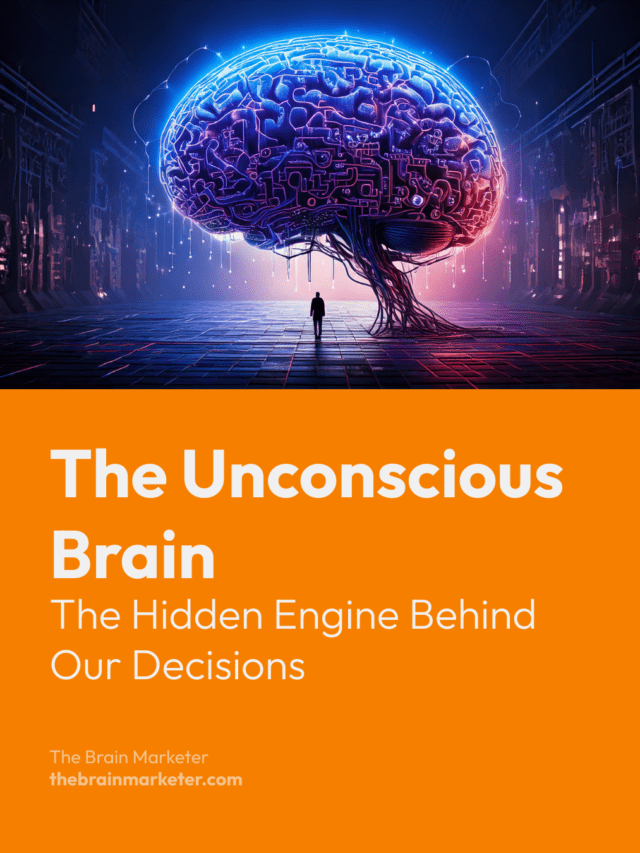The Power of the Unconscious Mind
Did you know that 95% of our brain’s activity happens unconsciously? The moment we become aware of our existence, we are only engaging a mere 5% of our cognitive resources. This means that the vast majority of our thoughts, decisions, and actions occur without us even realizing it.
The unconscious brain is a powerhouse, constantly working behind the scenes. It processes information at lightning speed, just 10 milliseconds of reaction time, allowing us to navigate the world efficiently. Unlike our conscious mind, which processes information sequentially, the unconscious mind can handle multiple tasks simultaneously. This is why you can walk, talk and think all at once without actively focusing on each action.
Key Takeaways
- 95% of brain activity is unconscious, meaning we only have direct control over 5% of our thoughts.
- The unconscious mind is fast and efficient, processing information in just 10 milliseconds.
- Heuristics help the brain simplify decisions, but they can lead to cognitive biases.
- Before 1998, the unconscious was not recognized as a scientific field, but today, it forms the basis for priming techniques in psychology and marketing.
- Neuromarketing taps into the unconscious mind to influence consumer behavior.
The Unconscious Mind at Work
The influence of the unconscious brain is inescapable. Take this simple exercise: try looking at a word without reading it. Impossible, right? Your brain automatically deciphers the text, bypassing your conscious intention.
Another fascinating example is heuristics, mental shortcuts the brain uses to simplify complex information. While heuristics help us make quick judgments, they don’t always guarantee accuracy. Consider these examples:
- Amsterdam might be called “Scamsterdam” due to negative experiences with overpriced tourist traps, illustrating how preconceived notions shape perception.
- The term “Frankenfood” is often used for genetically modified food, evoking a negative bias by associating it with Frankenstein’s monster rather than rational assessment.
- The word “Workaholic” describes someone obsessed with work, automatically framing the behavior in terms of addiction rather than dedication.
- People often assume that someone wearing glasses is more intelligent, a classic example of a social heuristic where our brain links physical traits to personality traits.
- Seeing a product labeled “low-fat” might lead consumers to assume it is healthy, even if it contains high amounts of sugar, demonstrating how linguistic simplification influences decision-making.
- A person wearing a white coat is often perceived as an expert, even if they are not a doctor, demonstrating the authority heuristic, where appearance alone influences trust.
- When a website displays “only 2 items left in stock!”, people feel an urgency to buy, assuming scarcity equals higher value, an example of the scarcity heuristic.
These automatic responses aren’t random; they stem from our brain’s survival instinct. The unconscious mind is designed to conserve energy, optimizing how we interact with the world. Processing every single detail consciously would be mentally exhausting, so our brain takes shortcuts to keep up.
From Pseudoscience to Science
Surprisingly, before 1998, the concept of the unconscious mind was not widely recognized in scientific disciplines. Psychologists and neuroscientists dismissed it as an ambiguous or indefinable phenomenon. Instead, they referred to such processes as “automatic behaviors.”
For example, think about riding a bicycle. Once you’ve learned, balancing on two wheels becomes second nature, an unconscious process. You no longer actively think about how to distribute your weight or adjust your speed, your brain takes care of it automatically.
This realization laid the foundation for priming techniques in psychology and marketing. By subtly influencing the unconscious brain, brands and advertisers can shape consumer decisions without people even noticing.
Implications for Neuromarketing
Understanding the unconscious mind is crucial for marketing professionals. Every color, shape, and word in an advertisement can trigger automatic responses, influencing how consumers perceive and interact with brands. Neuromarketing leverages these principles to optimize branding, messaging, and user experiences.
By tapping into the 95% of cognitive processes that remain beneath the surface, marketers can create more persuasive and emotionally resonant campaigns.
The unconscious mind is not just a passive observer, it is the true decision-maker. The more we understand it, the better we can harness its power.
Sources
- Bargh, J. A., & Chartrand, T. L. (1999). The unbearable automaticity of being. American Psychologist, 54(7), 462–479.
- Zaltman, G. (2003). How customers think: Essential insights into the mind of the market. Harvard Business Press.
- Kahneman, D. (2011). Thinking, fast and slow. Farrar, Straus and Giroux.
- Gigerenzer, G. (2007). Gut feelings: The intelligence of the unconscious. Viking.
- Hassin, R. R. (2013). Yes it can: On the functional abilities of the human unconscious. Perspectives on Psychological Science, 8(2), 195–207.
- Dijksterhuis, A., & Nordgren, L. F. (2006). A theory of unconscious thought. Perspectives on Psychological Science, 1(2), 95–109.

Vincent Heimann is a marketing project manager and neuromarketing enthusiast. He founded The Brain Marketer to bridge neuroscience and marketing through accessible, science-based content. With over 10 years of experience in digital strategy, UX/UI and communication, he shares practical insights to help brands connect with the human brain — ethically and effectively

